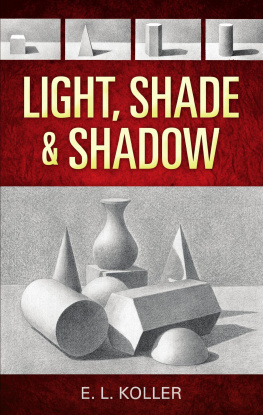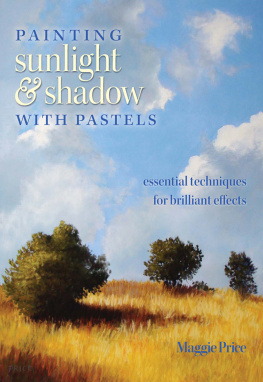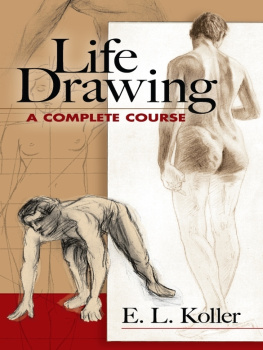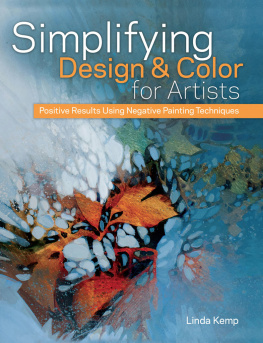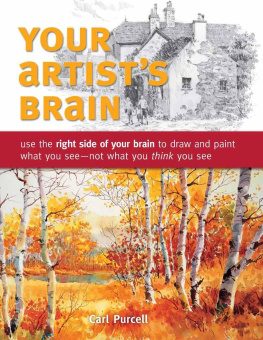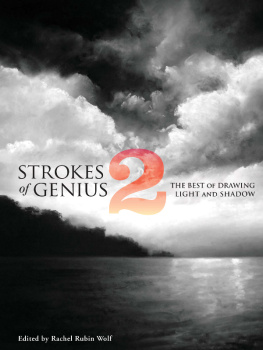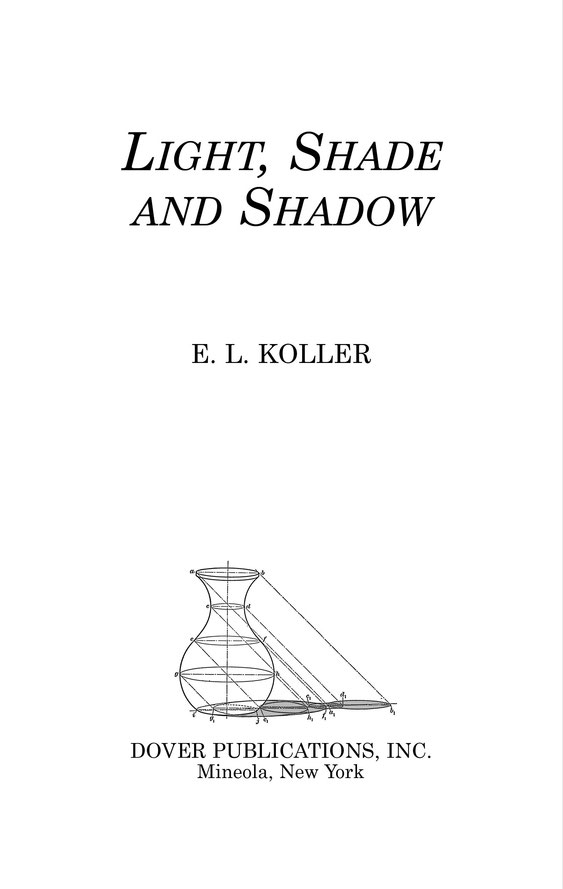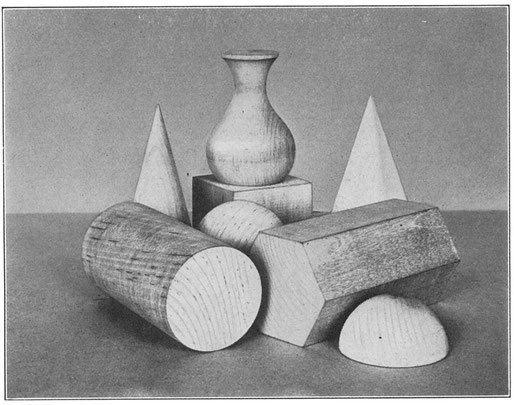Bibliographical Note
This Dover edition, first published in 2008, is an unabridged republication of Light and Shade Prepared Especially for Home Study, originally published by International Textbook Company, Scranton, Pennsylvania, in 1937. The book was first published in 1914.
9780486145327
Manufactured in the United States of America
Dover Publications, Inc., 31 East 2nd Street, Mineola, N.Y. 11501
Table of Contents
PURPOSE
1. Three Stages in Learning to Draw.The first stage in learning to draw is limbering up the arm, wrist, hand, and finger muscles and practicing line drawing and eye measurement. The second stage is making drawings in outline direct from objects and models, to familiarize the beginner with form and proportion in three dimensions; length, breadth, and thickness. The third stage, in logical order, is the portrayal of these objects or models pictorially. This means drawing these objects so that the light parts, the shaded parts, and the shadows that are cast, are properly expressed, not only in their forms and contours but also in their correct tone values.
This requires a thorough knowledge of the principles governing light, shade, and the casting of shadows, as well as a training in rendering drawings; that is, in portraying them pictorially. These principles can best be illustrated by placing the wooden models, used when making the outline drawings, in various positions and having the light fall upon them from certain directions, and then studying the light, shade, and shadow effects, and can best be applied by making drawings direct from the wooden models. This plan will be employed in this Section.
These light, shade, and shadow effects, as observed on the simple geometric solids employed, will serve as a foundation knowledge of how to portray lights, shades, and shadows when the objects employed are more complicated, as human figures, etc. For this reason this study of light, shade, and shadow values must not be looked on as being too elementary, but as a necessary foundation for successful pictorial or decorative work.
LIGHT, SHADE, AND SHADOW
SOURCES AND KINDS OF ILLUMINATION
2. Main Sources of Light.An examination of the wooden models will at once show that there are no absolute outlines in nature. The forms are expressed by various planes of light and shade coming together and the edges of these are seen simply because one plane is of a different tone value, that is, lighter or darker, than its neighbor. The values of these various planes are determined by the kind, the source, and the direction of the illumination that the objects receive.
Broadly considered, there are two general sources of light: sunlight, in which the rays of light are parallel, and artificial light, in which the rays of light come from a point and diverge.
The sunlight may be direct or indirect. The object may be directly in the path of the suns rays and thus be brilliantly lighted and cast clear distinct shadows; or it may simply receive light from a window that admits the reflected light from the outside lighted air; that is, the direct rays of the sun do not fall upon the object.
The artificial light may be of many kinds; from an arc or incandescent electric lamp, from a gas flame or burner, or from an oil lamp, a candle, an open-hearth fire, etc.
3. Kinds of Illumination.Both sources of illumination may light up the objects in many ways. When the light is obtained from a number of directions at once, as from several windows or widely separated lamps, the illumination is known as diffused lighting.
When the source of light is in front of an object, so that the nearer parts of the object are lighted and the back is in shade, the illumination is known as front lighting.
When the source of light is behind an object, so that the back is lighted and the front is in shade, the illumination is known as rear lighting.
When the source of light is overhead, so that the tops of the objects are lighted, the illumination is known as overhead lighting.
When the source of light is on one side, so that the side of the object nearest the light is most brilliantly lighted and the opposite side is in shade, the illumination is known as side lighting.
When the source of light is on the left side of and above the object, the illumination is known as conventional lighting.
The different kinds of illumination are here shown by means of photographs of the wooden models, but the actual effects caused by the different sources and directions of the light can best be studied by observing the results produced on the models when placed, singly and in groups, in every possible position.
4. Diffused Lighting.In Fig. 1 are shown the effects produced by ordinary diffused lighting on the group of models. This is the effect that is produced when the models are placed on a table in a room well lighted by three or four windows; that is, with the light coming from three or four (or more) directions at one time. In this case, the light comes mostly from the front and sides but not from the back and there has been no particular effort made to secure interesting lights and shades. This group is introduced merely to show a typical condition of lighting, but reveals very little that would be clear enough to enable one to formulate principles of light and shade. No gradations of light and shade are shown, neither are there any well-marked shadows. This is due to the fact that the light comes from many sources and kills the greater portion of the shadows. For instance, the typical shadows might be cast toward the right by the light coming from the left, but as light is coming also from the right and from the front these latter rays shine in upon the shadows and, to a great degree, dispel them. Therefore, what little shadow is shown is directly under or very close to the object casting it, and it is very soft or blurred on the edges. The texture, that is the grain, of the wood of the models is beautifully revealed, thus showing that the lighting is clear and adequate.
It will be observed that, as a group, this effect of lighting is flat, monotonous, and far from pleasing, although it is perfectly natural and typical. The importance, therefore, of securing a method of lighting that will bring out properly the light, shade, and shadow effects is quite evident.
5. Front Lighting.Fig. 2 shows the group of models lighted by direct sunlight coming from back of the observer and shining onto the front of the objects. The effects of surface lighting are interesting when comparison is made, object for object with the same group conventionally lighted, as in Fig. 5. On all the objects, deep shade is absent, because the strong front light dispels it, but a sort of half shade is noticeable on parts of each model. The high lights on all rounded surfaces tend to approach more nearly the center line instead of the left-hand contour of the object. If the models were of polished metal, the extremely brilliant points and lines of brightest high light would be clearly shown.
The shadows are clear and distinct, but little of them is seen because they are all cast back of the objects. However, should this group of models be looked at from above, the retreating shadows would be plainly seen.

